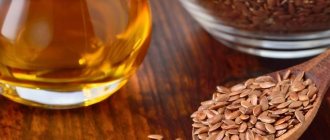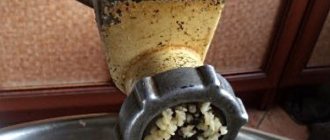Preparation of a 1% working solution of bleach.
Purpose: used for disinfection of premises, toilets, care items, dishes.
Equipment: specialized clothing: long robe, cap, oilcloth apron, medical gloves, replacement shoes, respirator, safety glasses; container for disinfectant solutions with appropriate markings; 10% clarified bleach solution (masterbatch); measuring containers marked with a capacity of 1 liter and 10 liters (bucket), water (9 liters); wooden spatula.
Mandatory conditions: the active chlorine content must correspond to 0.25% in the prepared solution; the solution is used once;
Preparation and execution of the procedure:
1. Put on specialized clothing and prepare equipment.
2.Check the labeling of the mother solution and the bucket for the working solution.
3.Take a 1 liter measuring vessel, pour 10% basic clarified bleach solution (master solution) into a 1 liter container. Pour into a container for 1% working solution (bucket). Add water to 10 liters. Stir the solution with a wooden spatula. Close the lid, check the labeling, put the date of preparation and signature.
4.Use for disinfection after preparation.
5.Take off specialized clothing, wash your hands and wipe dry.
Note: the content of active chlorine decreases during long-term storage.
Mother liquor and its varieties
First, a so-called mother solution is prepared, which is subsequently diluted in the required quantity for specific purposes. To prepare 10 liters of a 10% chlorine (mother) solution, you need to combine 2-3 kg of bleach in a sealable plastic or enamel container with 2-3 liters of water until a homogeneous slurry is formed. It is better to use a wooden spatula for mixing.
Then the remaining amount of liquid is added to obtain a volume of 10 liters. The mixture is covered with a lid and placed in a dark, dry place, stirring vigorously for the first 3-4 hours. After a day, the pulp is filtered through several layers of gauze, leaving a limescale residue at the bottom.
The resulting liquid is poured into a dark glass vessel and stored in a dark, ventilated area for 10 days. It is diluted in the following ratios:
- For hand disinfection – 0.25%;
- Washing floors and rinsing dishes – 0.5%;
- Disinfection of surfaces and tools in sanitary facilities – 5%.
In particularly difficult cases, you can enhance the disinfecting properties of chlorine with ammonia. The prepared mixture will have even stronger bactericidal properties and effectiveness.
Preparation of a 1% chloramine solution (1 liter).
Purpose: Use for disinfection.
Equipment: specialized clothing, a 1g sample of dry chloramine powder, a water container marked up to 1 liter, a container for a disinfectant solution, a wooden spatula.
Mandatory conditions: active chlorine content corresponds to 0.25%. The solution is used once.
Preparation and execution of the procedure: Put on specialized clothing, prepare equipment.
2. Pour a small amount of water into the container, place a sample of dry chloramine powder (10g) into the container, add water to the 1 liter mark, mix the solution with a wooden spatula, close the lid, check the markings of the container and tags, put the date of preparation of the solution and sign it.
“Diochlor: 7 tablets per 10 liters of water. Sulfochloranthine: 20g (1 heaped tablespoon) per bucket of water.”
Determination of the patient's body weight.
Purpose: diagnostic, study of a person’s physical condition
Contraindications: patient's serious condition.
Equipment: medical scales, clean oilcloth 30*30 cm on the scale platform, a container with a disinfectant solution for disinfecting oilcloth and gloves, a 5% chloramine solution with a 0.5% detergent solution, rags for double processing of oilcloth, latex gloves.
Preparation for the procedure: warn the patient about the upcoming procedure, explain the purpose, preparation conditions. Release the shutter of the scale, set the weights of the scale to the zero position, adjust the scales, close the shutter, lay the disinfected oilcloth on the scale platform.
Performing the procedure: invite the patient to carefully stand in the center of the platform on an oilcloth (without slippers). Open the shutter and establish balance by moving the balances. Perform weighing. Close the shutter. Instruct the patient to carefully step off the scale. Record the weighing data on the temperature sheet. Evaluate the result. (Normally, body weight according to Brocca’s formula is approximately equal to height minus 100). Remove the oilcloth and treat it by wiping it twice with a 5% chloramine solution with a 0.5% detergent solution.
Preparation of a 10% bleach stock solution
Before starting the process of preparing a bleach solution, a health worker must use not only a gown and a medical cap, but also be sure to put on a rubberized work apron, as well as rubber boots. Hands should be covered with thick rubber non-latex gloves, use safety glasses and a respirator, model Ru-60.
A kilogram of dry chlorine powder is placed in a deep enameled container, then a small amount of clean water is added and the entire contents of the container are stirred with a wooden spatula until it reaches a pasty consistency. Next, the remaining amount of water is poured in at the rate of 1 kilogram of chlorine powder - 10 liters of distilled water. Again, everything is slowly mixed until the chlorine is completely dissolved and a suspension is formed. The container is covered with a lid and left for 24 hours, for the first 4 hours of which the liquid is periodically stirred with a wooden spatula.
After a day, the mother chlorine solution is filtered and poured into a clean enamel or glass container and closed tightly with a lid. A filled oilcloth tag is glued to the container, indicating the production date of the disinfectant, percentage and signature.
The stock solution of bleach can be stored for no more than 7-10 days, after which it loses all its disinfecting properties and can no longer be used in medicine.
At the end of the solution preparation process, remove the upper protective apron, gown, gloves, goggles and respirator. Hands are thoroughly washed with soapy water.
Recommended
Use exclusively containers with dark glass, this will protect the liquid from contact with direct sunlight.
To stir the liquid, only a wooden stick is used to avoid a reaction with bleach.
Chlorine activity should be 357 g.
For the first time, 4 hours of infusion of chlorine liquid is recommended to stir the solution at least 4 times.
The room for disinfectants must meet all the necessary criteria:
- Entry into the premises is strictly prohibited for unauthorized persons, including children
- ventilate thoroughly every day
- be dry.
a program that is necessary for every enterprise.
Precautions when working with disinfectants. Create a memo for the nurse on safety precautions when preparing disinfectants. Discussion of the memo, its addition. Independent work on diluting disinfectant solutions. Teacher's comments and additions.
First aid for poisoning with disinfectants. Familiarize yourself with the requirements of the Federal State Educational Standard. First aid. Solving a situational problem. Checking answers, correction. Test control of material mastery. Discussion and generalization of the studied topic.
Homework. Study classes of disinfectants. Learn 5 disinfectants. Choose one correct answer:. Duration of hand washing after any manipulation:. Thermal disinfection used for milk processing:.
Disinfection is a method of destruction:. Storage conditions for chlorine-containing disinfectants.
Composition and properties
The chemical method of disinfection of medical instruments is the use of: a steam; b air; in UV rays; g solutions. Refers to the thermal method of disinfection. The following are allowed for the preparation of disinfectants: Treatment of the skin if a disinfectant comes into contact with it is carried out: a with ethyl alcohol; b running water; in a solution of furatsilin; g analyte solution. Choose one correct answer. Duration of hand washing before putting on gloves:. The destruction of pathogenic microorganisms in the environment is called.
After use, disposable rubber gloves are exposed.
Boiling is a method of disinfection:. Protective clothing heavily contaminated with blood is necessary. The working solution of chloramine is valid for a period in days: a 45 b 30 c 14 g 1. During disinfection the following are destroyed:. All work with disinfectants is carried out by: When storing chlorine-containing preparations, their activity.
Standard answers to test tasks. Evaluation criteria. When 1 tablet is dissolved in water, 1.5 grams of active chlorine is released. The shelf life of the product in unopened manufacturer's packaging is 85 months. The shelf life of working solutions of the product is 9 days. Has antimicrobial activity against:. The disinfectant has a whitening effect.
The disinfectant is highly soluble in water. Working solutions are transparent, have the smell of chlorine, and do not spoil the treated surfaces of wood, glass, polymer materials, as well as dishes, toys, products made of corrosion-resistant metals, glass, rubber and plastics. Disinfectant according to acute toxicity parameters according to GOST Table 1: Preparation of working solutions from tablets.
The presence of opalescence and slight sediment is allowed. In addition, the product contains a detergent and degreasing component. The product has good washing, degreasing and deodorizing properties, does not spoil the objects being treated, does not have a bleaching effect on colored fabrics, does not damage products made of various metals, including carbon steels and alloys, does not fix organic contaminants, and does not cause corrosion of metals.
The product removes protein, fat, and other types of contaminants from surfaces made of various materials: glass, ceramics, metals, carpets, upholstery fabrics, concrete, rubber, plastic, tiles, porcelain, earthenware and others.
The product retains its properties after freezing and subsequent thawing. Working solutions are non-flammable, fire- and explosion-proof. The product is completely biodegradable and environmentally friendly.
How to prepare a stock solution of 10% bleach?
The shelf life of the product in unopened manufacturer's packaging is 5 years. The shelf life of the product in opened manufacturer's packaging is 1 year. The shelf life of working solutions is up to 45 days if they are stored in a closed glass, plastic or enamel container without damaging the enamel at room temperature in places protected from direct sunlight. Within 1 day after treatment, a prolonged antimicrobial effect is maintained on the treated surface.
Solutions of the product have good washing and cleaning properties. The product retains its antimicrobial activity after single freezing and thawing.
Working solutions are non-flammable, fire- and explosion-proof, with acute toxicity parameters in accordance with GOST. It is a transparent blue liquid with a specific odor, miscible well with water. The product is produced in polyethylene containers with a capacity of 0 to 10 dm3.
The shelf life of the product, if stored in unopened manufacturer's packaging, is 5 years, of working solutions - 14 days, if stored in closed containers. The product retains its properties after freezing and subsequent thawing. Table 1.
Among the basic principles, fundamental to the Hippocratic model is the principle of “do no harm.” We take 1 kg. Then add the rest of the water to a total volume of 10 liters.
The product mixes well with water. Working solutions of the product are not aggressive towards the objects being treated and do not discolor fabrics. The guaranteed shelf life of the product in the manufacturer's sealed packaging is 5 years, for working solutions - up to 34 days. The product is produced in polymer bottles with a capacity of 1. The product has antimicrobial activity against gram-negative and gram-positive microorganisms including mycobacterium tuberculosis, pathogens of especially dangerous infections - plague, cholera, viruses including hepatitis viruses A, B, C.
Pathogenic fungi of the genus Candida, causative agents of nosocomial infections, and also has washing and deodorizing properties. The product is intended for disinfection of used medical gloves. The shelf life of the product when stored in unopened manufacturer's packaging is 5 years, the shelf life of working solutions is 8 days. The product has an antimicrobial effect against bacteria, including the causative agents of tuberculosis, especially dangerous infections: plague.
Cholera, anthrax, tularemia, viruses that cause parenteral hepatitis and HIV, fungi of the genera Candida and Trichophyton, as well as detergents. The product is intended for disinfection of indoor surfaces, sanitary equipment, and medical products.
Produced in the form of tablets weighing 3.35 g. Addition to solutions 0. Release form: plastic jars with a safe lid for and for tablets. Aqueous solutions are transparent, colorless, with a slight smell of chlorine. Criteria for selecting disinfectants:. Environmental friendliness, toxicity to humans and animals.
Working solutions
Now, from the ready-made mother chlorine solution, workers prepare working solutions with the required consistency and percentage:
- 0.1% solution - 100 milliliters of 10% stock chlorine solution per 9.9 liters of water
- 0.2% solution - 200 milliliters of 10% stock chlorine solution per 9.8 liters of water
- 0.5% solution - 500 milliliters of 10% stock chlorine solution per 9.5 liters of water
- 1% solution - 1 liter of 10% mother chlorine solution per 9 liters of water
- 2% solution - 2 liters of 10% mother chlorine solution per 8 liters of water
- 3% solution - 3 liters of 10% mother chlorine solution per 7 liters of water
- 5% solution - 5 liters of 10% chlorinated stock solution per 5 liters of water
Hygiene in hospital premises
The purpose of such cleaning is to ensure infection safety.
Disinfection of work equipment (mop, bucket, rags)
Availability of a container with chlorine solutions
Availability of protective clothing (robe, gloves, cap, goggles).
Disinfecting cleaning of the premises is carried out at least 2 times a day (more frequent cleaning is possible during the quarantine period). For this type of cleaning, use a 0.5% solution of lime chlorine and a 1% solution of chloramide. Only marked equipment is allowed to be used.
You need to start cleaning from the bedside tables, then remove dust from window sills, lampshades, beds and other furniture surfaces.
Pipes and radiators are cleaned of dust daily.
Washing the ward is carried out strictly from the windows, towards the middle of the ward and towards the exit.
After wet cleaning, the room is ventilated.
After each cleaning, equipment is disinfected with a 0.5% chlorine solution for one hour. Wet rags and towels are rinsed and dried thoroughly.
A stock solution of bleach is used as a disinfectant and destroys infectious bacteria. This product helps treat medical equipment and also helps fight lice, cockroaches, and other insects.
What is bleach?
This substance comes in the form of a powder and is sold in sealed plastic packaging. The product contains active chlorine up to 36 percent, when it enters the aquatic environment, it dissolves and forms a disinfectant solution. Chloramine is a powder with a grayish tint, it contains benzene and toluene, the proportion of chlorine in the substance is 26.5 percent, while it is in active form. First, a chlorinated stock solution is made from the bulk substance, and then bleach compositions for disinfection.
Quicklime
Quicklime (boiling lime) is calcium oxide. It can be lump or ground.
Quicklime is stored in a dry, closed, unheated room for 15 days. Longer storage leads to carbonation, which reduces its active properties. Therefore, they usually store no more than a 15-day supply necessary for work. In production environments, tanks equipped with feed systems are best suited for storage.
The shelf life of quicklime in paper bags is limited to 15 days; in sealed packaging the shelf life is unlimited.
Storing quicklime requires complete exclusion of moisture, otherwise it can cause quite strong heating of the substance. Therefore, there are high requirements for protecting the premises in which packages are stored from rain, snow or fog.
How to prepare a stock solution of 10% bleach?
Before you start preparing the solution, you need to put on work clothes, a rubberized apron on top, boots, goggles, gloves, and a respirator. That is, to completely protect all parts of the body and organs from harmful substances. To work, you need to prepare a deep enamel container, pour a kilogram of dry chlorine into it, add a little water, and stir thoroughly with a wooden stick to get the composition in the form of porridge. Then add the rest of the water, observing the proportions of a kilogram of chlorine and 10 liters of water. The liquid must be distilled. Then the mixture is stirred again so that the chlorine is completely dissolved, covered with a lid and left for a day. During the first hours, the composition is stirred periodically. After a day, the solution is filtered and poured into a clean glass or enamel container, tightly closed, and an indication with the date of manufacture is glued. The masterbatch can be stored for up to 10 days, and then its properties are lost. When the cooking work is finished, you need to take off your work clothes and wash your hands well with detergent.
Basic recommendations
- Utensils for storage or preparation should have dark glass to prevent the sun from shining on the solution.
- To stir the composition, use a stick made of wooden material, this will prevent the formation of a reaction with the composition.
- Chlorine should have an activity of 350 g.
- During the first four hours of infusion of the solution, it is stirred every hour.
- The room for preparing the composition must be inaccessible to children, equipped with good ventilation, and free from dampness.
- The resulting precipitate, when filtered, is thrown into the sewer.
Disinfectants: bleach, chlorine water
At enterprises producing bakery products, chlorine-containing agents (bleach, chloramine, antiseptol, milk of lime, anolyte, sodium hypochlorite solution) are used to disinfect equipment and premises, as well as quaternary ammonium compounds: the drug "Septabik" and the product "Septodor".
The effectiveness of treatment with disinfectants depends on the content of the active substance in them, the exposure time and the temperature of the prepared solution.
Chlorine-containing disinfectants have a corrosive effect on metal when the temperature rises. Therefore, they are used at temperatures no higher than 50° C (45-50° C). Thoroughly washed surfaces are disinfected, since food residues bind chlorine and reduce its antimicrobial effect. Stainless steel is less susceptible to corrosion from chlorine-containing preparations. The rubber used for equipment gaskets is destroyed by steam, but can withstand the effects of chlorine-containing disinfectant solutions.
Quaternary ammonium compounds do not have a corrosive effect on metal, wood, plastic, concrete, rubber. However, at temperatures above 45-50° C, their toxicity increases. Therefore, the temperature of working solutions should not exceed 45° C.
Chlorine bleach is a white, lumpy powder with a strong, specific odor of chlorine. Does not completely dissolve in water.
Bleach is easily destroyed in contact with air, so it must be stored in a closed container and in the dark. Bleach solutions lose activity during storage; therefore, they must be prepared for no more than 10 days.
The activity of the prepared bleach solution is periodically determined, which is expressed either in % or in mg/l of active chlorine. The bactericidal effect of a bleach solution depends on the content of active chlorine in it, the amount of which ranges from 28 to 36%. Chlorine containing less than 25% active chlorine is unsuitable for disinfection. If stored improperly, bleach decomposes and loses some of its active chlorine. Decomposition is promoted by heat, moisture, and sunlight, so bleach should be stored in a dry, dark place, in a tightly closed container at a temperature no higher than 20-25 ° C. Work with bleach is carried out in a respirator and goggles due to the release of chlorine during preparing the solution.
To disinfect equipment, use a clarified (settled) solution of bleach, the so-called “chlorine water”.
Chlorine water is prepared from a concentrated (original) 10% clarified solution of bleach.
The initial solution is prepared as follows: 1 kg of dry bleach is placed in an enamel bucket and crushed. Then add cold water to a volume of 10 liters, mix well, cover with a lid and leave for a day in a cool place. After this, the resulting clarified 10% solution is carefully drained and filtered through several layers of gauze or filtered through a thick cloth. Store in dark glass bottles, closed with a wooden stopper, in a cool place for no more than 10 days.
Working solutions of the required concentration are prepared from the original 10% clarified solution immediately before their use.
Calculated data for the amount of basic solution required to prepare 0.2-10% working solutions of bleach are given in Table 30.
The amount of initial 10% solution required to prepare the working solution Table 30
Concentration of bleach in working solutions, %
| Amount of initial 10% solution required to prepare the working solution, ml | ||
| for 1 l | for 10 l | |
| 0,20 | 20 | 200 |
| 1,00 | 100 | 1000 |
| 2,00 | 200 | 2000 |
| 5,00 | 500 | 5000 |
| 10,00 | Stock solution | Stock solution |
Note: the concentration of the working solution as a percentage is determined by the weight amount of bleach taken to prepare the bleach-lime suspension. The concentration of clarified bleach solutions from 0.2 to 10% is selected depending on the object being disinfected.
Chlorine water is prepared from a concentrated (original) 10% clarified solution of bleach.
How to prepare a 1% bleach solution?
A one percent composition of bleach is used as a disinfectant for toilets, utensils, and other containers for the care of sick people. To prepare the composition, you need to provide yourself with work clothes and additional protective equipment, also prepare a measuring container in the form of a glass, a wooden stick, one liter of 10% bleach, and ten liters of water.
The prepared composition of chlorine should contain no more than 0.25 percent; the mixture cannot be reused.
- First you need to put on special protective clothing and other equipment, then prepare all the components and containers.
- Then, using a measuring cup, pour one liter of 10% bleach solution into the container, then pour ten liters of water. The composition is thoroughly mixed and tightly closed; the date of manufacture is marked on the container.
- After preparation, the solution can be used for its intended purpose.
- Clothes and other equipment are removed, hands are thoroughly washed with detergent.
- If the composition is stored for a very long time, the chlorine will lose activity, which means the substance will no longer perform its functions.
Bleach: application
“Chlorine” is used to treat hard furniture, sanitary equipment, furnishings, tableware, transport, cleaning equipment, indoor surfaces, medical waste, limited areas of the road, garbage, toys, soil, air filters.
Clarified disinfection solutions are used to disinfect the above-mentioned objects in the presence of diseases whose pathogens are more resistant (anthrax, tuberculosis).
For “rough” disinfection of secretions of infectious patients, food debris, garbage, biological fluids, and areas contaminated with anthrax pathogens, unclarified compounds or a powdered substance are used.
Precautionary measures
“Chlorine” belongs to the third class of danger when introduced into the stomach, the second – when exposed to inhalation. It has a pronounced local irritant and weak sensitizing effect on the skin and mucous membranes of the eyes.
When preparing a bleach solution, you must use rubber gloves and respiratory protection: universal respirators RPG-67 or RU-60M, sealed goggles. Add the powder to water, and not vice versa, to avoid strong evaporation and burns. All work should be carried out in a dark, well-ventilated place or fume hood.
Perform disinfection procedures in the absence of patients or sick people. After they are carried out, ventilation is necessary for 1-2 hours. Discharge the product into the sewer system only in diluted form.
How to prepare chloramine 1%?
Chloramine is also used as a disinfectant. To make it, they also use protective equipment, a measuring container, a wooden stick, and containers with dark glasses. The composition is used no more than once, and active chlorine should be in an amount of 0.25 percent.
- Put on protective clothing and other equipment, prepare the necessary utensils.
- A little water is poured into the prepared container, and 10 grams of chloramine are added, then the water is added to the one liter mark. The mixture is thoroughly mixed with a wooden stick, and closed with a lid, inscribed with the date of manufacture.
You can make a solution using Diochlor by adding about 7 tablets of the substance to a bucket of water.
Slaked lime
Slaked lime is calcium hydroxide or slaked hydrated lime (fluff), it can also be called lime milk or dough - it depends on the consistency. It is obtained by adding water to quicklime. In fluff, water is present in a ratio of 60-80 percent, and lime milk or dough is obtained by diluting the fluff with more water.
The process of slaking lime is called dehydration. It is produced in open space, in prepared pits or boxes. There are fast-slaking lime - up to 8 minutes, medium-slaking - up to 25 minutes and slow-slaking - over 25 minutes.
During the quenching process, heat is released; water is added gradually so as not to reduce the quenching temperature. The amount of water regulates the desired consistency; when the raw material stops absorbing water, its addition should be stopped. The yield of finished slaked lime depends on the quality of the initial raw materials: 1 kg of premium raw materials yields about 2 kg of lime paste.
Storing slaked lime
After dehydration, the lime is kept in an equipped pit for two weeks - if it is used in mortars or for masonry. And about a month - if it is used for plastering.
On top of the solution is covered with a layer of fine sand up to 20 cm thick; in sub-zero temperatures, so as not to freeze, you can also pour a layer of earth on top of the sand - up to 70 cm. The pit with the covered substance must be fenced and marked - for the safety of people and animals. Holding is necessary to complete the process of extinguishing even the smallest particles of raw materials; unextinguished particles can contribute to swelling of the future coating.
Shelf life
Slaked lime in dough consistency is stored for a long time and only gains quality over time.
Where is it used?
Slaked lime is used throughout construction, gardening, medicine, and water supply:
- it softens hard water,
- used for the production of fertilizers,
- interior decoration,
- protecting tree trunks from insects and rodents,
- added to building mixtures to protect against fungus and mold.
Cleaning in a hospital using prepared solutions
Using the prepared solutions, they clean rooms in hospitals to prevent the spread of infectious microorganisms.
- First of all, mops, rags, and buckets are disinfected.
- There should be containers with the prepared composition in the room.
- The work is performed in protective clothing, that is, in a gown, cap, gloves, and goggles.
This cleaning is carried out twice a day; if quarantine is declared in the room, then more often. To perform this kind of cleaning, 0.5% bleach is used, all equipment must be signed, this also applies to containers with prepared compounds. The floor is washed using strict technique, starting from the windows, moving towards the middle, and towards the exit. After such cleaning, the room must be ventilated, equipment must be washed with a bleach solution, rags must be washed and dried.
General cleaning of the department
About twice a month, all rooms in the hospital are thoroughly cleaned; all patients are removed for this purpose. All furniture must be moved or removed from the rooms altogether, depending on which department is being cleaned. Disinfectant cleaning involves washing the ceiling, walls, windows, lampshades, and other pieces of furniture. The floor is washed first with soapy water and then with chlorine solution. After the work is completed, the room is well ventilated and the furniture is returned to its original place. Wiping bedside tables, radiators, and sinks is done every day.
Disinfection of the bathroom and treatment room
The bathroom must be cleaned at least twice a day, and the equipment must be signed and used only for toilets. To treat the bathroom, use a 0.5% bleach mixture. In this solution, after washing, the equipment must be disinfected for about one hour. All rags are thoroughly rinsed and dried.
The treatment room must also be thoroughly washed, and special clothing must be put on before starting work. Such a room is washed up to twice a day with a separate rag; all strands, rollers, and other surfaces must be wiped with the solution. To do this, you can use chloramine, hydrogen peroxide, bleach solution, in combination with detergents. The floor surface is washed with the same compounds, and the equipment is soaked for an hour. The room is ventilated, a general cleaning is carried out on the ceiling, lampshades, walls, radiators, and other objects that are located in the room. The main condition when preparing and using a stock solution of bleach is compliance with safety precautions. The work is performed not only in a robe, but also in a rubber apron, gloves, goggles, and a respirator; this helps protect a person from harmful fumes. The room for preparing the composition must meet certain conditions; strangers, especially children, should not enter there. The room should be thoroughly ventilated, after finishing work and removing special clothing, hands should be washed well with a detergent.
Lime bleach
Bleached lime is produced by chlorinating fluff in a fluidized bed. It is used for degassing, disinfection, bleaching of drinking water and disinfection. There are two varieties and is a powder (maybe with lumps) of white or lightly colored.
The varieties differ in the proportion of active chlorine and in the coefficient of thermal stability. Small packages for retail sales have different shelf life and it depends on the variety: the first variety has a shelf life of 3 years, and the second - 2 years.
Small-packaged bleach should be stored in sealed containers, protected from moisture and sunlight. The original packaging must be marked indicating that it is a caustic substance.
It can be packed in polyethylene or propylene bags, in steel drums with polyethylene liners. In retail, these are usually packages of a certain strength weighing 500 g, 1200 g and 1500 g. The packaging can be sealed, tied with chlorine-resistant twine or a metal ring. This substance is supplied to the Far North in wooden barrels.
Safety requirements
Based on the severity of the impact on the body when ingested, bleach is classified as a moderately hazardous substance of the third class, and the chlorine released from it is classified as a second class substance.
Under the influence of air, heat, moisture, light, bleach breaks down, releasing chlorine and oxygen. It is a strong oxidizing agent, and chlorine dust can cause irritation of mucous membranes.
When working with it, you need to protect your respiratory organs and eyes with special protective equipment - a filter gas mask or a respirator. If the substance does get on the mucous membranes, you need to rinse them with running water for 15-20 minutes. If it gets into the stomach, it is recommended to drink vegetable oil and water in sips and immediately seek medical help.
The premises in which this substance is stored must be equipped with supply and exhaust ventilation.
Bleach itself is not a flammable substance, but if it gets on other materials it can intensify their combustion, so its compatibility with other materials should be taken into account during storage and transportation.
During decomposition, self-heating of bleach may occur; in this case, measures must be taken to disperse its reserves.
Chloride of lime intended for domestic use is disposed of as household waste; on a production scale, it must be disposed of at special licensed enterprises.







